Advertisement
Advertisement
Logan Krushka
About me:
I haven't shared any details about myself.
About my family:
I haven't shared details about my family.
Interested in the last names:
I'm not following any families.
Updated: July 19, 2023
Message Logan Krushka
Loading...one moment please


Recent Activity
Logan Krushka
joined AncientFaces!
Jul 19, 2023 1:02 AM
joined
Member as of July 19, 2023
Member as of July 19, 2023
Photos Added
Logan hasn't shared any photos yet.
Recent Comments
Logan hasn't made any comments yet
Logan's Followers
Be the first to follow Logan Krushka and you'll be updated when they share memories. Click the to follow Logan.
Favorites
Loading...one moment please



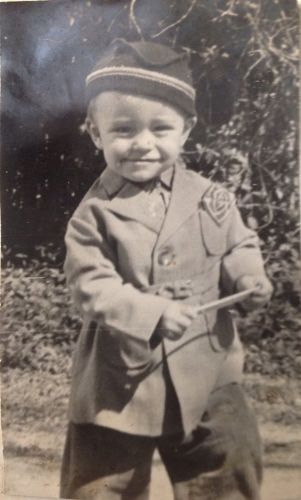
Lost & Found
Help reunite mystery or 'orphan' photos that have lost their families.
Photos with the names and dates lost in history. AncientFaces has been reuniting mystery and orphan photos with their families since we began in 2000.
This 'Lost & Found' collection is of photos foun... 

Political
Original photos of the politicians and political events throughout the past few centuries.
Welcome to a collection of photographs that document the fascinating history of politics. From democracies to monarchies, communism to fascism, and everything in between, this page captures the divers... 
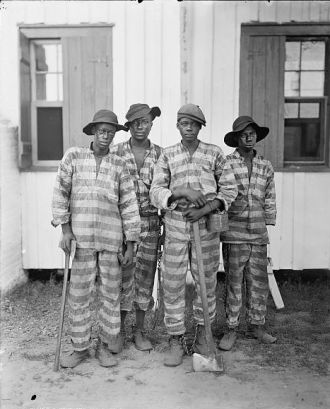
Notorious
The people and places that live on in our memories - not for good reasons but because of how they shocked and saddened.
Images of serial killers, mass murderers, despots and dictators, prisons, and the victims of these horrors. These people & places live on in infamy in our history.
There are the notorious killers: Th... 
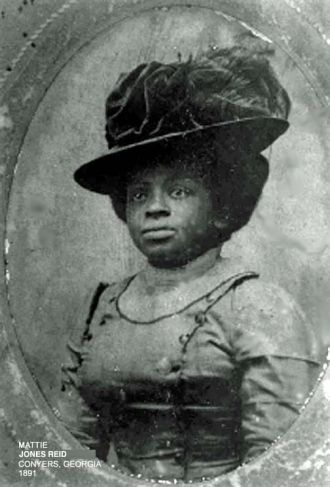
1800s
The 1800s where the end of the industrial revolution and the birth of scientists.
The Industrial Revolution began around 1760 and ran through the 1840's. Then began the birth of the profession of science. Louis Pasteur, Charles Darwin, Michael Faraday, Thomas Edison, and Nikola Te... 
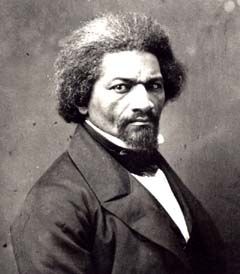
African Americans
See the faces of just some of the many African Americans who have contributed to building the United States into the country it is today.
African Americans in the early history of the United States had an extremely difficult start as immigrants. Having been primarily forced to immigrate to a new continent, African Americans worked throu... 

Native Americans
Images of the Native American people - the tribes, their dress, and their lifestyles. We honor and celebrate Native American history with this collection of historic photos.
The best way to understand the people who first inhabited North America, Native Americans, is through their own words. The following quotes contain some of the wisdom passed down through generations o... 
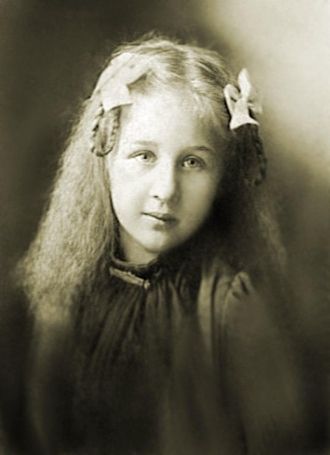
Popular Photos
These historical photos have generated quite the buzz!
This collection of historical photos has got people talking. These photos - either because of the subject and/or the story - have generated a lot of comments among the community. What do you have to s... 
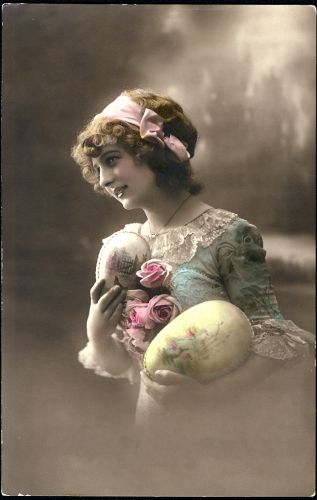
Fashion
Discover how fashion has changed over the years with this collection of photos.
Fashion styles & vintage clothing throughout the decades that will inspire, make you wish for those times again, or may make you ask "What were they thinking"?
Clothing styles have obviously changed ... 

Celebrities
Discover the lives and legacies of notable celebrities from the past, like Bette Davis and John Wayne, by browsing photographs of them in their prime.
The lasting impact of celebrities from the past cannot be denied; they continue to be an essential part of our cultural history. Through their talent, charisma, and unique personalities, they entertai...
Alan Curtis
About me:I haven't shared any details about myself.

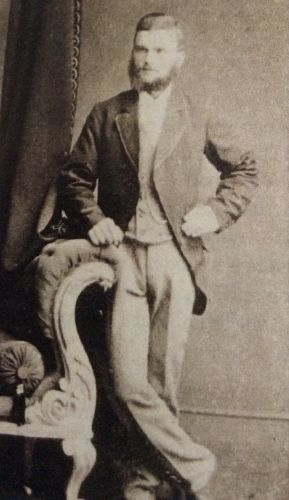
1875 With 1 pack horse Charles 24, Frederick 22 and Christopher 16 set out along the banks of the Dorset River prospecting. On April 22 1875 with the young Christopher leading & his two elder brothers following with the pack horse he turns right at a sharp bend in the Dorset and follows a tributary (Main Creek) uphill with the intention of getting a better view of the surroundings from higher ground.Christopher notices a glint in quartz rock on a sharp escarpment and calls his brother. On the information gleaned from George Renison Bell they realised they have discovered quartz bearing tin. They staked it out and named it Black Boy.
1875 The town of Bothers Home (later re-named Derby)
In April 22 1875 with the young Christopher leading & his two elder brothers following with the pack horse he turns right at a sharp bend in the Dorset and follows a tributary uphill with the intention of getting a better view of the surroundings from higher ground.Christopher notices a glint in quartz rock on a sharp escarpment and calls his brother. On the information gleaned from George Renison Bell they realised they have discovered quartz bearing tin. They staked it out and named it Black Boy.
1875 In October Charles, Frederick & Christopher were prospecting along the banks of a small creek east of Derby (Main Creek) which runs into the Ringarooma River in the Cascade Valley. Here they discovered and stake a mining claims on a rich load of alluvial tin which they named Brothers Home Mine etc. Realising the alluvial tin was washing from a rich vein further up the riiver they moved up the river and found the main lead at the junction of Brothers Creek and the Ringarooma River. Wilhelm had decided to prospect on his own and he found tin in the same area and established the Lone Brother claims. Sam Diprose is appointed Mine Manager of their numerous mines as they were established. Sam later marries Louisa Krushka with George Renison Bell as best man.
When the Krushka brothers discovered the alluvial tin they contacted their now lifelong friend George Renison Bell (Little Bell) who along with other friends stake out further claims along the creek.
1875 On the advice of George Fry (the first farmer to be granted land in Upper Ringarooma) Christopher purchases 2000 acres of land stretching from George Fry's property(Sunnyside) at Ruby Flats to south of the Dorset River. This land includes the land on which Ford View sits as his father was only squatting on the land at the time. Christopher names this large parcel of land North View and over a period of time he builds a 27 room home which includes a bakery etc. Christopher hires William Gill a friend from Richmond as farm manager. William later marries Augusta. The brothers all established horse race tracks on their properties and hold regular community race meetings, picnic days & balls.
Christopher Krushka purchased race horses and on a annual basis goes to the Melbourne Cup . He had success with his horses and in 1894 his horse (Amadeus) wins both the Hobart & Launceston Cups.
Christopher was very generous with his money and threw the Launceston Cup from a hotel balcony to the crowds in the streets below. He was later to loose his wealth when he sold his share of the mine, his generosity and the approaching WW1 and world wide depression.
Christopher established the town of Krushka Town (renamed Ringarooma) by setting up a store, hotel and donating land & building the first church. He set aside part of property & subdivides it into town blocks.
The land where the family Fairveiw homestead once stood was later taken back by the goverment of the day and a school was built on the land. Today the Ringarooma Area School stands where the Fairveiw homestead once stood.
1882 In January the Governor Sir George C Strahan in the town of Krushka with the intention of naming it Strahan. He stays in the largest house in town (North View) and after a night of merriment departs without proclaiming it Strahan.
The discovery of tin in and around the Cascade River Valley in the 1800's by George Renison Bell, the Krushka Brothers and others leads to the rapid development of farms
& logging in the North East and the towns of Brothers Home (renamed Derby) Krushka Town (renamed Ringarooma) & Krushkas Bridge (renamed Moorina.
The original port town of Ringarooma at the mouth of the Ringarooma River was renamed Boobyalla. Mining, dredging, logging and land clearing along the length of the Ringarooma River created major siltting at it’s mouth resulting in the loss of the town and port.
Derby:
The area had been surveyed in 1855, but was not settled until 1874, Krushka brothers discovered a large lode of tin, and set up a mine (named The Brothers Mine) in the area, assuring the town's economic future. The town was originally known as Brother's Home until renamed Derby (believed to be after Edward Smith-Stanley, 14th Earl of Derby the Prime Minister of the United Kingdom).
Brother's Home Post Office opened on 1 August 1882 and was renamed Derby in 1885.
Derby reached its peak in the late 19th century, when its population reached over 3,000, and the Brothers Mine (renamed the Briseis Mine after the winner of the 1876 Melbourne Cup) was producing upwards of 120 tonnes of tin per month.
On 4 April 1929, the Briseis Dam used by the mine burst after heavy rains and the Cascade River flooded the town, killing 14 people. The mine was closed, but re-opened five years later although it never reached the same level of output as it had in the last century and closed in 1948
The Briseis Dam Disaster resulted from the bursting of a dam constructed on the Cascade River above Derby to supply water for hydraulic tin mining operations. Following unprecedented rainfall of 450 millimetres during the previous two days, on 4 April 1929 a deluge of 125 millimetres fell in one and a half hours on the catchment area above the Briseis Dam.
The resultant flood broke the dam, and a huge wall of water surged down the river valley towards the town, engulfing several houses and other buildings and pouring into the workings of the Briseis Mine. Fourteen lives were lost, including one family of five who were sitting down to a meal when their home was carried away. Senior Constable William Taylor was awarded the Royal Humane Society Medal and the King George Medal for bravery in saving eight stranded miners

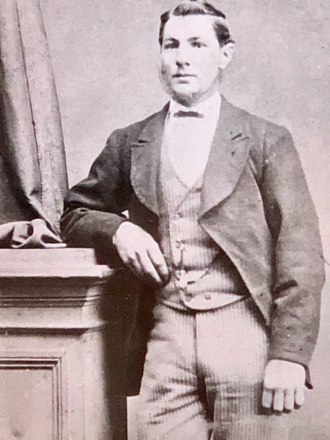
Re attached death Certificate:
Van Deimens Land have issued this certificate (birth date) based on Kushka surname issue date because of no previous family records
1875 With 1 pack horse Charles 24, Frederick 22 and Christopher 16 set out along the banks of the Dorset River prospecting. On April 22 1875 with the young Christopher leading & his two elder brothers following with the pack horse he turns right at a sharp bend in the Dorset and follows a tributary uphill with the intention of getting a better view of the surroundings from higher ground.Christopher notices a glint in quartz rock on a sharp escarpment and calls his brother. On the information gleaned from George Renison Bell they realised they have discovered quartz bearing tin. They staked it out and named it Black Boy
1875 In October Charles, Frederick & Christopher were prospecting along the banks of a small creek east of Derby (Main Creek) which runs into the Ringarooma River in the Cascade Valley. Here they discovered and stake a mining claims on a rich load of alluvial tin which they named Brothers Home Mine etc. Realising the alluvial tin was washing from a rich vein further up the river they moved up the river and found the main lead at the junction of Brothers Creek and the Ringarooma River. Wilhelm had decided to prospect on his own and he found tin in the same area and established the Lone Brother claims. Sam Diprose is appointed Mine Manager of their numerous mines as they were established. Sam later marries Louisa Krushka with George Renison Bell as best man.
When the Krushka brothers discovered the alluvial tin they contacted their now lifelong friend George Renison Bell (Little Bell) who along with other friends stake out further claims along the creek.
1876 The Krushka brother cut a cart track from the mine to the original town of Ringarooma on Ringarooma Bay (Boobyalla) as it was faster & cheaper to ship the ore to Launceston from there than out of Bridport. They build a bridge across the Ringarooma River for the track and name it Krushkas Bridge (renamed Moorina)
1876 Frederick purchases a large track of land in Upper Ringarooma stretching south to New River. He calls it Mineral Banks.
In the same period they purchase other parcels of land near the mine & at Upper Ringarooma.
Note:
1882 In January the Governor Sir George C Strahan in the town of Krushka with the intention of naming it Strahan. He stays in the largest house in town (North View) and after a night of merriment departs without proclaiming it Strahan.
The discovery of tin in and around the Cascade River Valley in the 1800's by George Renison Bell, the Krushka Brothers and others leads to the rapid development of farms & logging in the North East and the towns of Brothers Home (renamed Derby) Krushka Town (renamed Ringarooma) & Krushkas Bridge (renamed Moorina.
The original port town of Ringarooma at the mouth of the Ringarooma River was renamed Boobyalla. Mining, dredging, logging and land clearing along the length of the Ringarooma River created major siltting at it’s mouth resulting in the loss of the town and port.
Derby:
The area had been surveyed in 1855, but was not settled until 1874, Krushka brothers discovered a large lode of tin, and set up a mine (named The Brothers Mine) in the area, assuring the town's economic future. The town was originally known as Brother's Home until renamed Derby (believed to be after Edward Smith-Stanley, 14th Earl of Derby the Prime Minister of the United Kingdom).
Brother's Home Post Office opened on 1 August 1882 and was renamed Derby in 1885.
Derby reached its peak in the late 19th century, when its population reached over 3,000, and the Brothers Mine (renamed the Briseis Mine after the winner of the 1876 Melbourne Cup) was producing upwards of 120 tonnes of tin per month.
On 4 April 1929, the Briseis Dam used by the mine burst after heavy rains and the Cascade River flooded the town, killing 14 people. The mine was closed, but re-opened five years later although it never reached the same level of output as it had in the last century and closed in 1948
The Briseis Dam Disaster resulted from the bursting of a dam constructed on the Cascade River above Derby to supply water for hydraulic tin mining operations. Following unprecedented rainfall of 450 millimetres during the previous two days, on 4 April 1929 a deluge of 125 millimetres fell in one and a half hours on the catchment area above the Briseis Dam.
The resultant flood broke the dam, and a huge wall of water surged down the river valley towards the town, engulfing several houses and other buildings and pouring into the workings of the Briseis Mine. Fourteen lives were lost, including one family of five who were sitting down to a meal when their home was carried away. Senior Constable William Taylor was awarded the Royal Humane Society Medal and the King George Medal for bravery in saving eight stranded miners.
AncientFaces
This account is shared by Community Support (Kathy Pinna & Daniel Pinna & Lizzie Kunde) so we can quickly answer any questions you might have.
Please reach out and message us here if you have any questions, feedback, requests to merge biographies, or just want to say hi!
2020 marks 20 years since the inception of AncientFaces. We are the same team who began this community so long ago. Over the years it feels, at least to us, that our family has expanded to include so many. Thank you!
2020 marks 20 years since the inception of AncientFaces. We are the same team who began this community so long ago. Over the years it feels, at least to us, that our family has expanded to include so many. Thank you!



